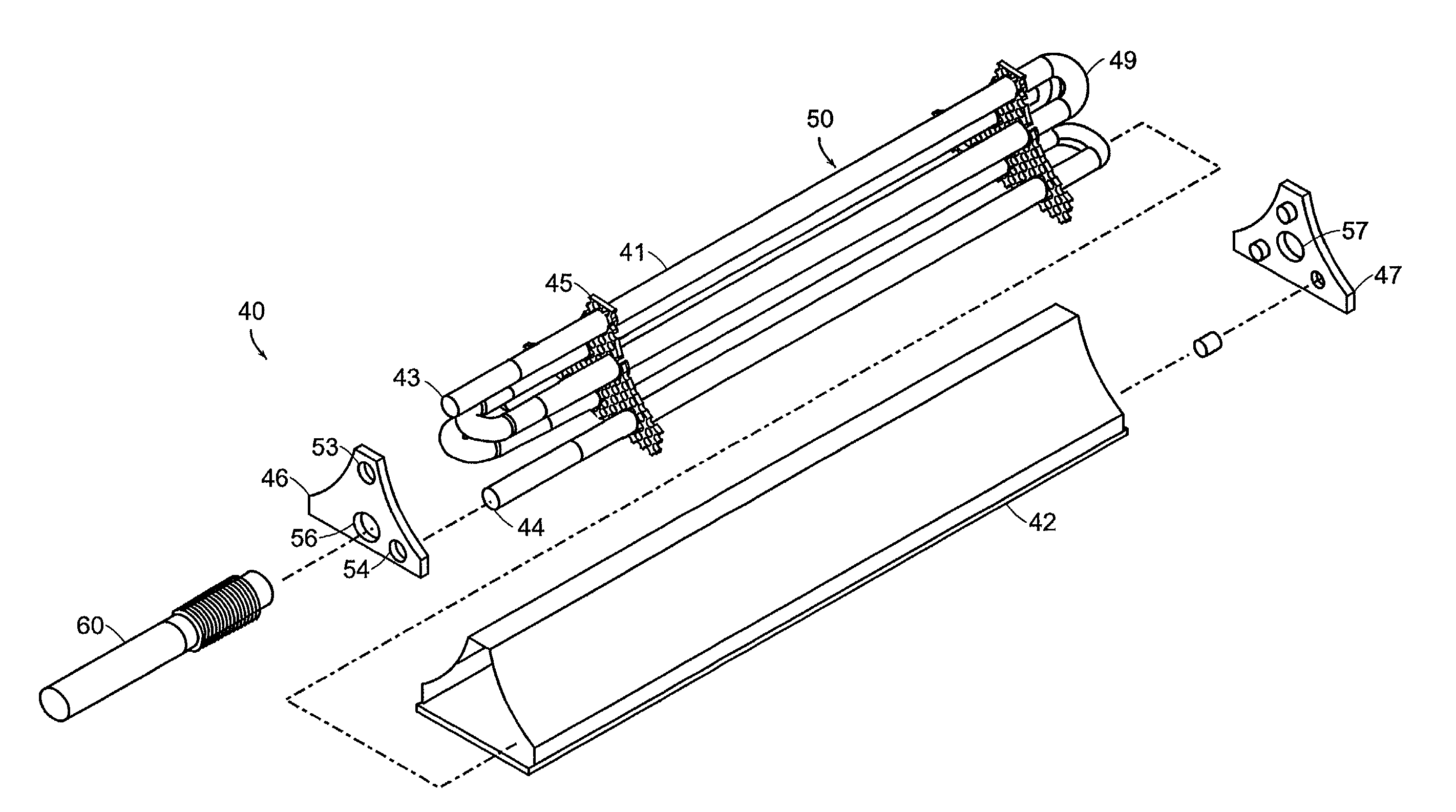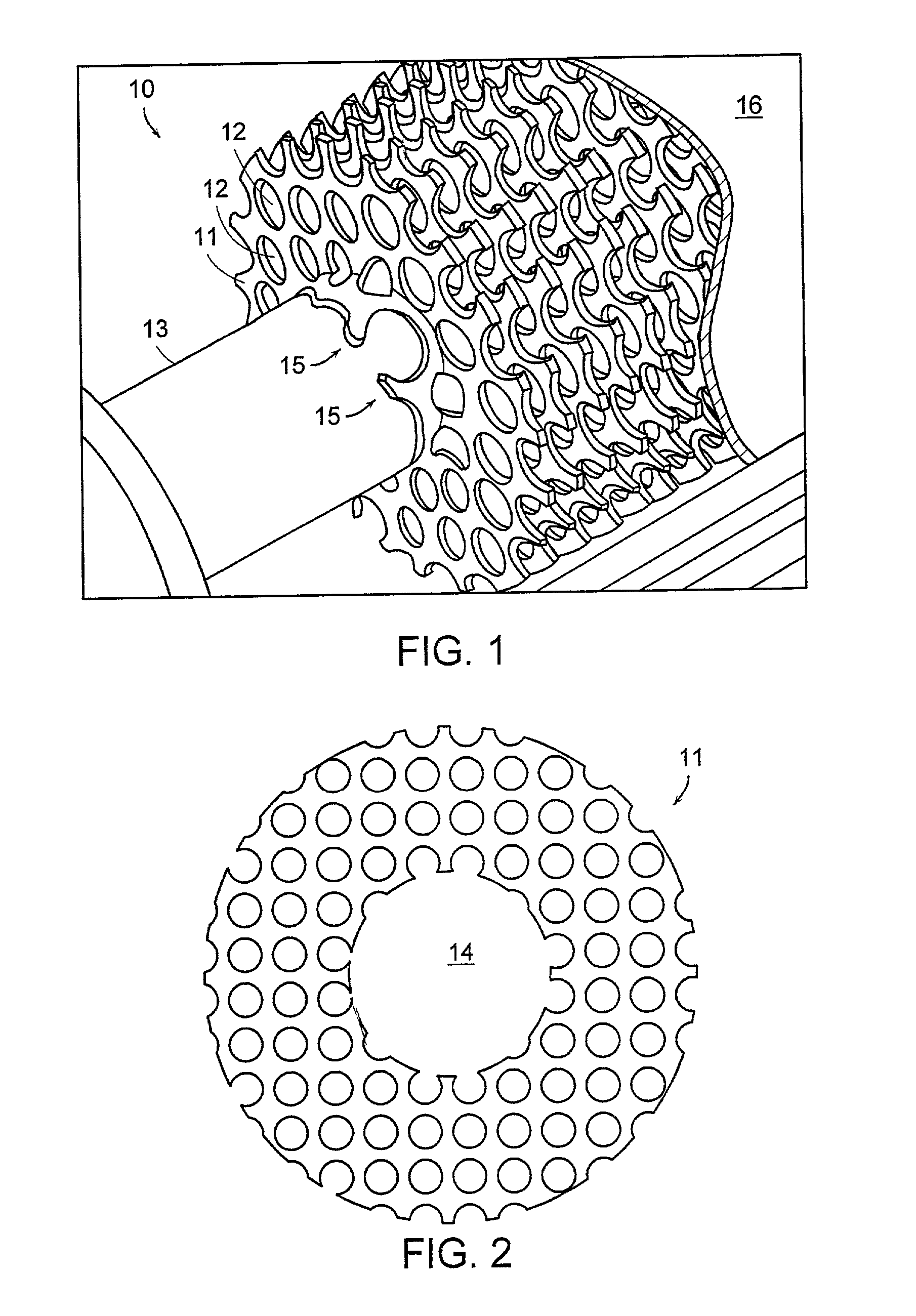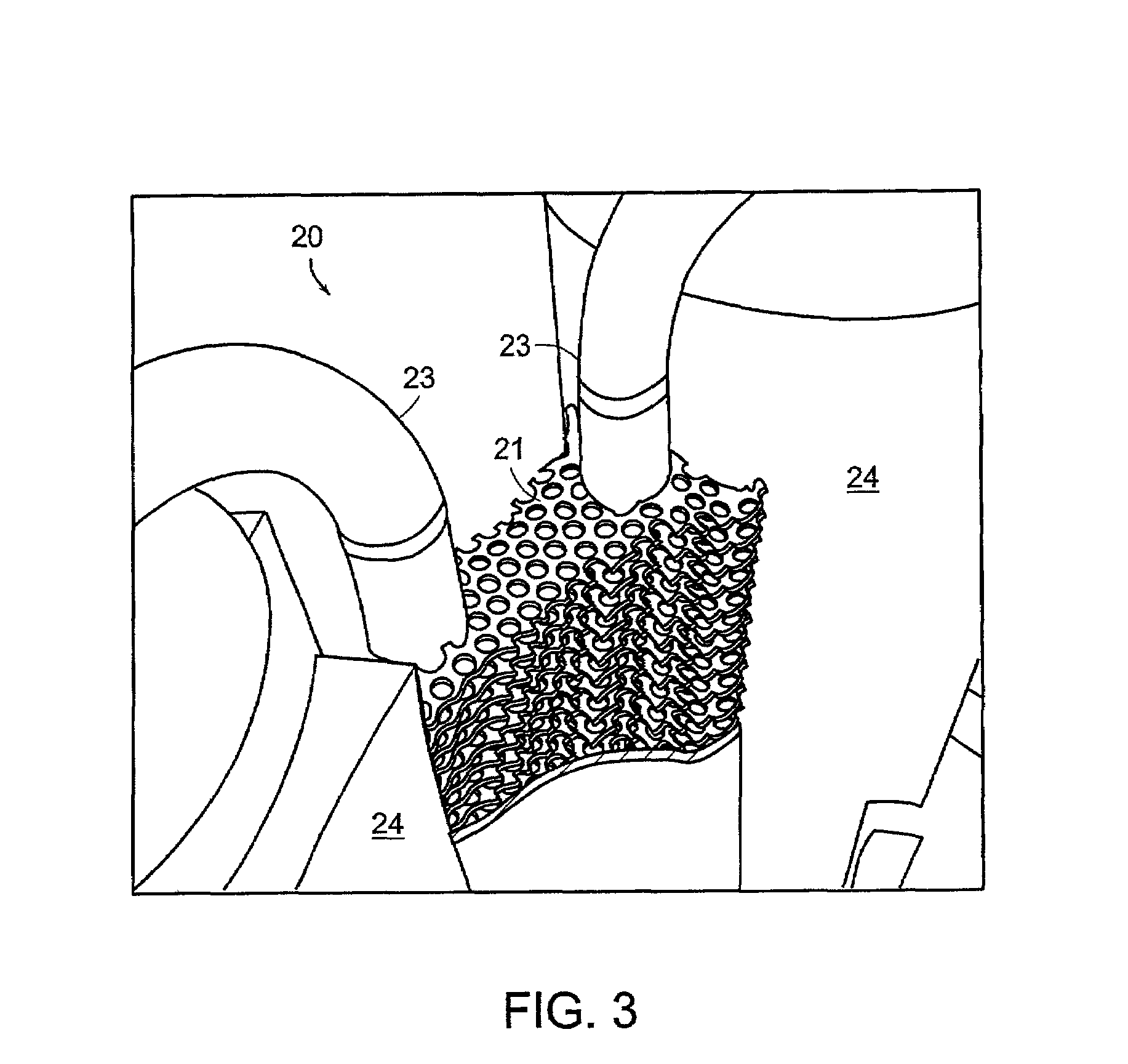Perforated fin heat exchangers and catalytic support
a technology of heat exchangers and fins, which is applied in indirect heat exchangers, laminated elements, lighting and heating apparatus, etc., can solve the problems of difficult to bond firmly to tubes, and achieve the effect of high heat exchange rates
- Summary
- Abstract
- Description
- Claims
- Application Information
AI Technical Summary
Benefits of technology
Problems solved by technology
Method used
Image
Examples
examples
[0026]FIG. 1 shows an example of a heat exchanger 10 according to the principles of the invention. In this embodiment, circular discs 11 (1.5 inches in diameter) with a central hole (0.5 inch diameter) were punched from a 20 g gauge sheet of copper having regular perforations 12. A central flange 15 was formed in the disks by flaring the central hole to obtain a final diameter of 0.75 inch, thereby forming a flange surrounding the hole of about 0.125 inch in height. The punched disk was used as a perforated fin. The fins were slid onto a 0.75 inch diameter tube 13 of 316 stainless. The flanges provided a predetermined spacing of the discs on the tube. This simple press fit provided adequate heat exchange. The fin-tube assembly can also be permanently bonded together, by brazing, for instance, to improve stability and heat exchange. This can be done by coating the tubing with copper brazing material before pressing on the tubes. The assembly can then be brazed in a hot oven and allow...
PUM
| Property | Measurement | Unit |
|---|---|---|
| Temperature | aaaaa | aaaaa |
| Flow rate | aaaaa | aaaaa |
| Shape | aaaaa | aaaaa |
Abstract
Description
Claims
Application Information
 Login to View More
Login to View More - R&D
- Intellectual Property
- Life Sciences
- Materials
- Tech Scout
- Unparalleled Data Quality
- Higher Quality Content
- 60% Fewer Hallucinations
Browse by: Latest US Patents, China's latest patents, Technical Efficacy Thesaurus, Application Domain, Technology Topic, Popular Technical Reports.
© 2025 PatSnap. All rights reserved.Legal|Privacy policy|Modern Slavery Act Transparency Statement|Sitemap|About US| Contact US: help@patsnap.com



